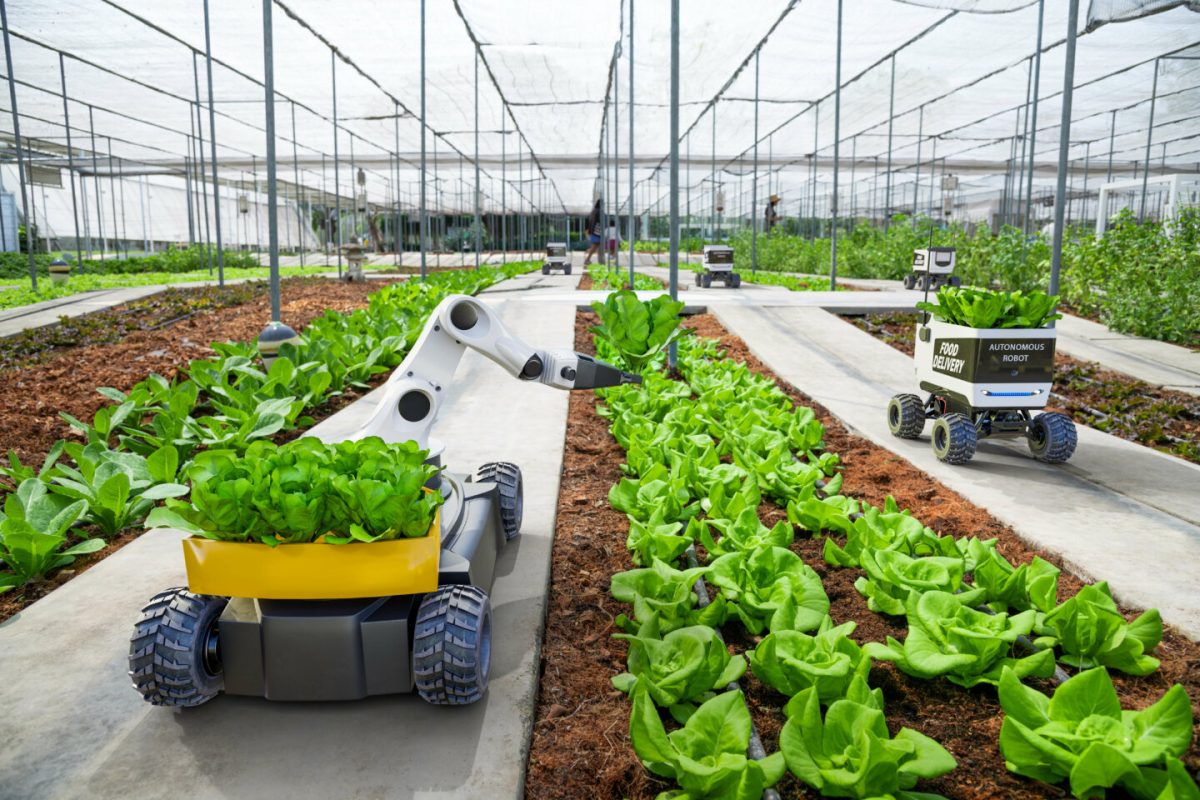YETRAC
Agricultural Robots – Enhancing Efficiency in Modern Farming
Agricultural Robots – Enhancing Efficiency in Modern Farming
Agricultural robots are specialized robots designed and deployed for various agricultural purposes. These robots play a crucial role in modern agriculture, where they can perform tasks that were traditionally labor-intensive and often strenuous. Below, I’ll provide an overview of agricultural robots, their applications, and trends in this field:
Applications of Agricultural Robots:
- Harvesting: One of the most common applications of agricultural robots is in harvesting crops. These robots are designed to harvest fruits, vegetables, and other crops efficiently. For instance, there are robots for fruit picking, such as apples, strawberries, and grapes.
- Weed Control: Agricultural robots are employed for weed control, eliminating the need for manual weeding. Some use advanced technologies like lasers to target and remove weeds accurately.
- Planting Seeds: Robots can plant seeds with precision and consistency, improving the efficiency of planting operations.
- Environmental Monitoring: Drones and ground-based robots are used for environmental monitoring in agriculture. They can collect data on crop health, soil conditions, and weather, helping farmers make informed decisions.
- Soil Analysis: Soil analysis robots can collect soil samples and perform tests to assess soil quality. This information helps farmers make appropriate decisions about fertilization and crop selection.
- Livestock Applications: Agricultural robots are also used in livestock farming. They can automate tasks like milking, washing, and castrating animals.
Design of Agricultural Robots:
- End Effector: The end effector is the part of the robot responsible for performing the specific task, such as harvesting, weeding, or spraying. These end effectors are designed to be task-specific, considering factors like crop type and size.
- Gripper: Grippers are used for grasping and manipulating crops or objects. They are typically designed with simplicity, low cost, and effectiveness in mind.
- Manipulator: The manipulator allows the gripper and end effector to move through the environment. It typically consists of parallel links and pneumatic actuators, which convert compressed air into motion.
Historical Development:
- Agricultural robotics has a history dating back to the 1920s when research into automatic vehicle guidance for agriculture began.
- Early agricultural robots in the 1950s and 60s still required cable systems to guide their path.
- Advances in robotics were closely tied to the development of computers and machine vision in the 1980s.
- Some early examples of agricultural robots included robots for harvesting oranges in France and the US.
Market Demand:
- Agriculture faces challenges related to labor shortages and an aging workforce, especially in countries like Japan and the United States.
- The need to feed a growing global population requires increased agricultural efficiency.
- Agricultural robots are seen as a solution to these challenges, promising increased productivity and reduced labor costs.
Current Trends:
- There is ongoing research and development in autonomous agricultural vehicles, influenced by advancements in self-driving cars.
- Companies are making progress in developing robots that can harvest soft crops like strawberries and other fruits.
- Data collection and analysis are becoming crucial for improving farm productivity and addressing labor shortages.
- Robots are being developed for tasks such as weeding, spraying, seeding, and even livestock monitoring.
- Some robots use advanced technologies, like artificial intelligence and computer vision, to improve their capabilities.
- Solar-powered robots are being developed for sustainability and eco-friendliness.
- Open-source software and hardware for agricultural robots are emerging, making it more accessible for smaller farmers.
- Universal agricultural platforms that can perform various tasks are also being explored.
- Competition events and startups are driving innovation in agricultural robotics.
Agricultural robots are transforming modern farming practices, making them more efficient, sustainable, and capable of meeting the challenges of an ever-growing global population. These robots are set to play an increasingly significant role in the future of agriculture.

